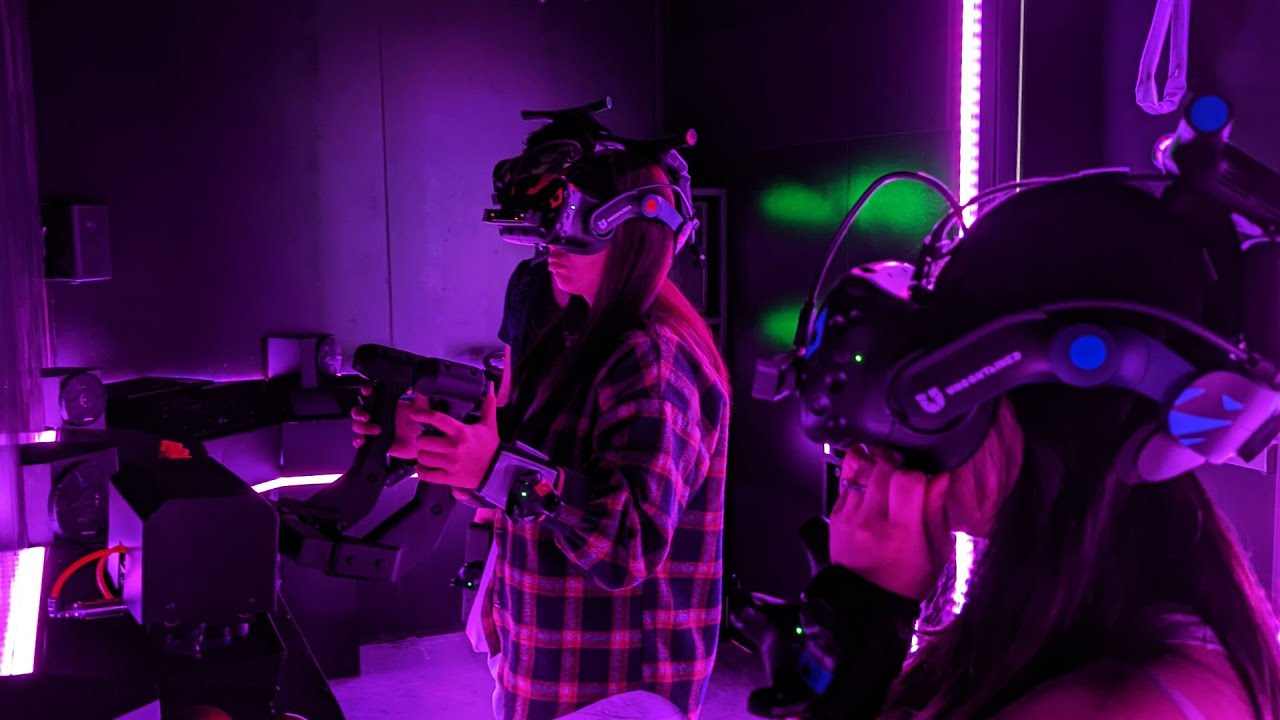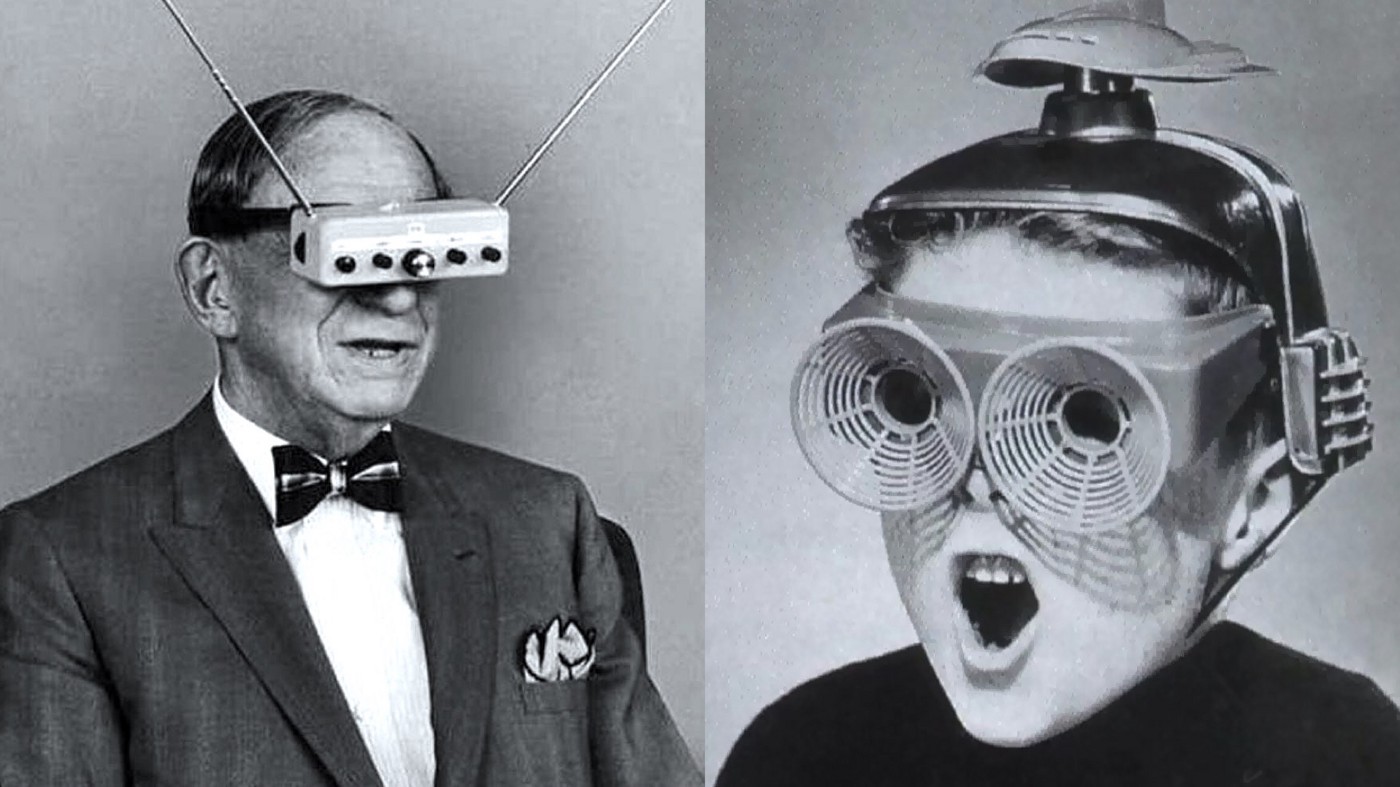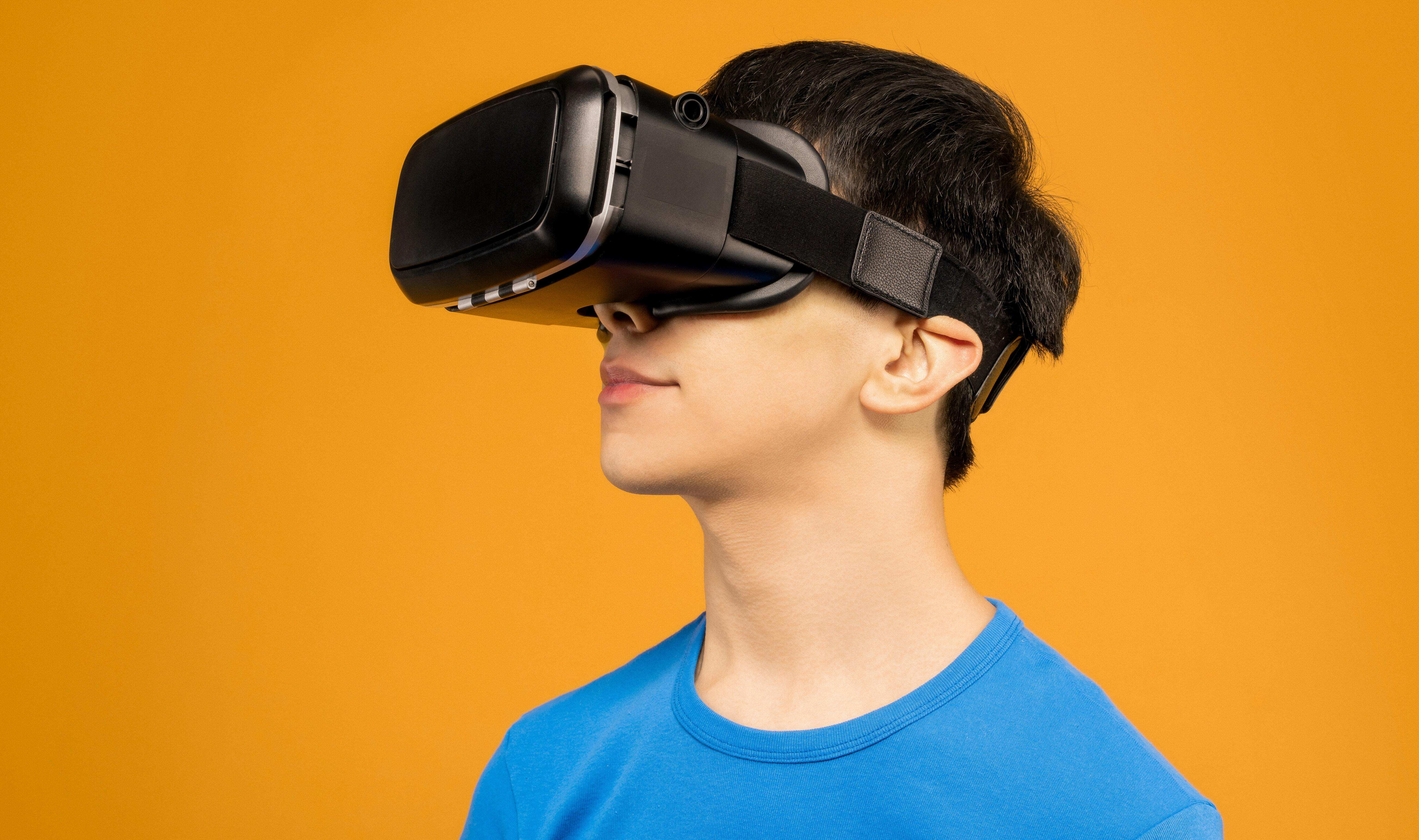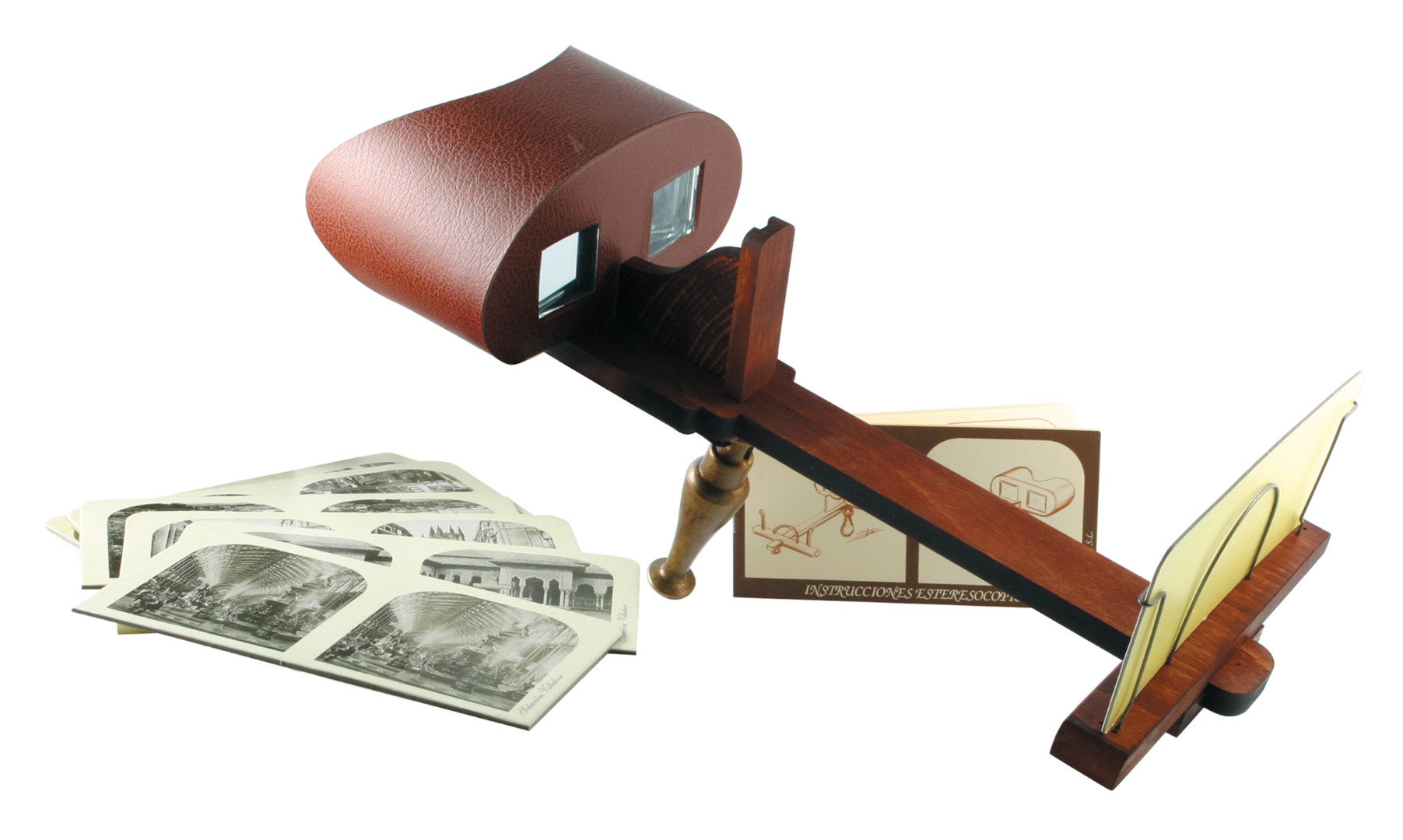Introduction
Virtual reality (VR) has revolutionized the way we experience entertainment, and one area where it has made a significant impact is in the world of gaming. VR games transport players into immersive and lifelike virtual environments, offering a level of realism and interactivity that was previously unimaginable. Whether you’re a casual gamer or a die-hard enthusiast, virtual reality games provide an unparalleled gaming experience that engages all your senses and transports you to another realm.
With the advent of advanced technology and the growing popularity of VR headsets, virtual reality gaming has become more accessible and widespread. It’s no longer limited to a fantasy reserved for a select few; anyone can now dive into virtual worlds and experience games like never before.
So, what is this magical technology that enables us to step into alternate realities? In the simplest terms, virtual reality creates a simulated environment that can be similar to or completely different from the real world. It tracks the user’s head and body movements, allowing them to interact with and navigate through the virtual environment.
Virtual reality games offer a variety of experiences, from exploring fantastical worlds to engaging in adrenaline-pumping action-packed adventures. The possibilities are endless, and the only limit is the imagination of game developers. From single-player experiences to multiplayer competitions, virtual reality games cater to a wide range of preferences and interests.
Not only do virtual reality games provide a thrilling entertainment experience, but they also offer numerous advantages. For instance, VR games can be used for educational and training purposes, allowing users to practice real-world skills in a safe and controlled environment. Moreover, virtual reality enhances the social aspect of gaming, enabling players to connect and interact with others from all over the world.
With the growing popularity of virtual reality games, the market is flooded with a wide range of options. From popular titles like “Beat Saber” and “Superhot VR” to immersive storytelling experiences like “The Elder Scrolls V: Skyrim VR” and “Resident Evil 7: Biohazard,” there’s a virtual reality game for every taste.
Ready to dive into the world of virtual reality gaming? Getting started is easier than you might think. In the next sections, we’ll explore different types of VR games, the advantages they offer, popular game titles, and how you can embark on your virtual reality gaming journey.
What is Virtual Reality?
Virtual reality (VR) is a technology that simulates a virtual environment, allowing users to interact with and explore a computer-generated world using specialized devices, such as VR headsets. It creates a sense of presence, immersing the user in a three-dimensional, lifelike experience.
The goal of virtual reality is to trick the user’s senses, primarily sight and sound, into believing that they are truly present in the virtual environment. This is achieved through a combination of advanced hardware, software, and sensory input devices.
The cornerstone of virtual reality is the VR headset, which is worn on the head and typically covers the user’s eyes with a high-resolution display. The headset tracks the user’s head movements in real time, adjusting the displayed images accordingly, to create the illusion of a seamless, 360-degree view.
In addition to visual immersion, virtual reality often incorporates other sensory inputs to enhance the sense of presence. This may include spatial audio, which allows users to hear sounds coming from specific directions, and haptic feedback, which provides tactile sensations through vibrations or force feedback devices.
Virtual reality works by presenting the user with computer-generated 3D graphics that respond to their movements and actions. The graphics are rendered in real time, taking into account the user’s perspective and position within the virtual environment. This creates a sense of interaction and engagement, giving users the freedom to explore and manipulate the virtual world.
To fully experience virtual reality, users may also utilize additional input devices, such as motion controllers or gloves, which allow them to interact with objects and perform actions within the virtual environment. These devices track the user’s hand movements and gestures, translating them into corresponding actions in the virtual world.
Virtual reality has the potential to transform various industries, including gaming, entertainment, education, healthcare, and more. It offers unique opportunities for immersive storytelling, realistic training simulations, virtual travel experiences, and even therapeutic applications.
As technology continues to advance, virtual reality is becoming more accessible and affordable to a broader audience. With the increasing availability of VR headsets and a growing library of immersive VR experiences, virtual reality is undoubtedly set to redefine the way we consume media and interact with digital content.
How Does Virtual Reality Work?
Virtual reality (VR) is a technological marvel that transports users into immersive virtual environments. But how exactly does it work? Let’s dive in and explore the inner workings of virtual reality.
At the core of virtual reality is a combination of hardware and software that work together to create a realistic and interactive experience for the user. The key components of virtual reality include the VR headset, motion tracking systems, and sensory input devices.
The VR headset is the gateway to the virtual world. It is typically a head-mounted display that fits over the user’s eyes and blocks out the real world. Inside the headset, there are high-resolution screens that display the virtual environment, creating a stereoscopic 3D effect. The headset also incorporates lenses to focus and align the images for each eye, resulting in a fully immersive visual experience.
To track the user’s movements and position, virtual reality systems use motion tracking technology. This allows the virtual environment to respond in real time to the user’s head and body movements, creating a sense of presence and immersion. There are different methods of motion tracking, such as inside-out tracking, where the headset contains built-in sensors to track the user’s movements, or external tracking systems that use cameras or sensors placed in the room to track the user and their accessories.
In addition to visual immersion, virtual reality aims to engage multiple senses to enhance the overall experience. This is where sensory input devices come into play. These devices can include hand controllers, gloves, or even full-body suits with haptic feedback, which provide tactile sensations to the user. For example, haptic feedback could simulate the feeling of touching objects or experiencing physical forces within the virtual environment, adding a whole new level of realism and interactivity.
Behind the scenes, powerful computer hardware and software work together to render and display the virtual environment in real time. This requires advanced graphics processing units (GPUs) to handle the demanding graphics requirements, as well as high-performance processors for smooth and responsive gameplay. The software algorithms take into account the user’s perspective, position, and movements to render the appropriate images and adjust them accordingly as the user navigates through the virtual world.
Furthermore, developers play a crucial role in creating realistic and captivating virtual reality experiences. They utilize game engines and VR development tools to create interactive 3D environments, realistic textures, and lifelike animations. They also employ sound design techniques to provide spatial audio, allowing users to hear sounds coming from specific directions, further enhancing the sense of immersion.
With the combination of these hardware and software technologies, virtual reality delivers an unparalleled experience that can transport users to a whole new world. It opens up a realm of possibilities for not only gaming and entertainment but also education, training, and various other fields.
As technology continues to advance, we can expect even more immersive, realistic, and accessible virtual reality experiences that will shape the future of how we interact with digital content. So, get ready to strap on that headset and embark on a journey into the extraordinary world of virtual reality.
Types of Virtual Reality Games
Virtual reality (VR) games offer a diverse range of experiences, catering to different preferences and interests. From heart-pounding action-adventure games to immersive storytelling experiences, there’s a virtual reality game for everyone. Let’s take a closer look at some of the most popular types of VR games:
- Action and Adventure: Action and adventure VR games put you in the heart of the action, whether it’s battling enemies, solving puzzles, or exploring dangerous environments. These games often offer intense gameplay, adrenaline-pumping moments, and a strong focus on immersive storytelling.
- Sports and Fitness: VR sports and fitness games allow you to engage in various sports activities right in your living room. From playing tennis and boxing to skiing and golfing, these games provide a fun and interactive way to stay active and improve your physical fitness.
- Simulation: Simulation VR games replicate real-world experiences and allow you to immerse yourself in different professions or scenarios. Whether it’s flying an airplane, managing a virtual city, or operating heavy machinery, simulation games offer a realistic and educational experience.
- Puzzle and Strategy: Puzzle and strategy VR games challenge your problem-solving and critical thinking skills. You’ll be tasked with solving intricate puzzles, strategizing your moves, and outsmarting opponents, all within a fully immersive virtual environment.
- Horror and Thriller: If you’re a fan of scares and thrills, VR horror and thriller games will deliver an intense and immersive experience. Prepare to face your worst fears as you navigate haunted houses, escape from terrifying creatures, and unravel spine-chilling mysteries.
- Social and Multiplayer: Virtual reality also offers a social aspect, allowing you to connect and interact with other players from around the world. Social and multiplayer VR games enable you to collaborate, compete, and form friendships within shared virtual spaces.
- Exploration and Travel: VR exploration and travel games transport you to breathtaking locations and allow you to explore them from the comfort of your home. Whether it’s climbing Mount Everest, diving into the depths of the ocean, or traversing alien landscapes, these games provide a sense of wonder and adventure.
These are just a few examples of the types of virtual reality games available. The beauty of VR gaming is that it continuously evolves and pushes the boundaries of what is possible. With advancements in technology, we can expect even more innovative and immersive gaming experiences in the future.
So, whether you’re seeking thrill, adventure, education, or simply a fun way to relax, virtual reality games offer a whole new level of immersion that traditional gaming can’t replicate.
Advantages of Virtual Reality Games
Virtual reality (VR) games offer a multitude of benefits that go beyond mere entertainment. These immersive experiences have the potential to enhance various aspects of our lives. Let’s explore some of the advantages of virtual reality games:
- Immersive and Realistic Experience: Virtual reality games provide an unparalleled level of immersion, making you feel like you’re truly inside the virtual environment. The combination of visual, auditory, and sometimes tactile stimuli creates a sense of presence and realism, enhancing the overall gaming experience.
- Improved Motor Skills and Coordination: VR games often require physical movement and hand-eye coordination to interact with the virtual environment. Engaging in these activities can improve motor skills, reflexes, and coordination, making virtual reality gaming a valuable tool for physical rehabilitation and improvement.
- Enhanced Education and Training: Virtual reality has immense potential for educational purposes. VR games can simulate real-world scenarios, allowing users to practice and learn in a safe and controlled environment. From medical simulations to flight training, virtual reality games offer practical and hands-on learning experiences.
- Overcoming Fears and Phobias: Virtual reality can be used to address and overcome fears and phobias in a controlled and supportive environment. Through exposure therapy, users can gradually expose themselves to their fears in a virtual setting, reducing anxiety and increasing the chances of successful treatment.
- Social Interaction and Collaboration: Virtual reality multiplayer games offer a social experience that brings people together, regardless of their physical locations. This allows players to connect, interact, and collaborate with others, fostering social connections and teamwork.
- Stress Relief and Relaxation: Engaging in virtual reality games can provide an escape from the stresses and demands of everyday life, offering a relaxing and enjoyable experience. Whether it’s exploring serene virtual landscapes or engaging in calming activities, VR games can help alleviate stress and promote well-being.
- Expanded Accessibility: Virtual reality games are becoming more accessible to a wider audience. With the availability of affordable VR headsets, more people can enjoy the immersive experiences without breaking the bank. This inclusivity allows individuals from different backgrounds and abilities to participate in virtual reality gaming.
- Cognitive Stimulation and Brain Training: VR games can challenge cognitive abilities and improve mental agility. From puzzle-solving to strategic decision-making, virtual reality games engage the brain, enhancing memory, attention, and problem-solving skills.
These are just some of the advantages that virtual reality games offer. As technology continues to evolve, we can anticipate even more innovative and beneficial applications of virtual reality in various domains.
Whether you’re seeking entertainment, education, or personal development, virtual reality games provide a unique and exciting platform for exploration and growth. Strap on your headset, immerse yourself in the virtual world, and unlock the endless possibilities of virtual reality gaming.
Popular Virtual Reality Games
Virtual reality (VR) gaming has garnered immense popularity, with a wide range of virtual reality games available to cater to different preferences and genres. Here are some of the most popular virtual reality games that have captured the hearts and minds of gamers:
- Beat Saber: This rhythm-based game has taken the VR world by storm. In Beat Saber, players wield virtual lightsabers and slice through blocks in time with energetic music. It’s a high-energy, physically engaging game that combines music and precision slashing, providing an exhilarating experience.
- Superhot VR: Superhot VR offers a unique and innovative take on the first-person shooter genre. Time only moves when you move, allowing players to strategize and take down enemies in slow motion. With its cinematic combat and intense action sequences, Superhot VR keeps players engaged and on the edge of their seats.
- The Elder Scrolls V: Skyrim VR: Step into the vast open world of Skyrim in this VR adaptation of the popular role-playing game. With its immersive world, epic quests, and captivating storyline, Skyrim VR brings the fantasy realm to life, allowing players to explore the vast landscapes and engage in thrilling combat with dragons and mythical creatures.
- Resident Evil 7: Biohazard: This survival horror game is an intense VR experience that puts players in the shoes of Ethan Winters as he investigates a mysterious plantation inhabited by grotesque creatures. The immersive VR environment intensifies the horror elements, making it a heart-pounding and terrifying adventure.
- Job Simulator: Job Simulator offers a delightful and humorous VR experience that allows players to step into various job roles in a virtual world. From working as a chef to being an office worker, Job Simulator provides a fun and light-hearted simulation experience filled with quirky interactions and comedic moments.
- Star Wars: Squadrons: Star Wars fans can fulfill their dreams of piloting iconic starfighters in this immersive VR space combat game. Engage in epic battles, customize your ships, and feel the thrill of intense dogfights in a galaxy far, far away.
- Half-Life: Alyx: Half-Life: Alyx is a groundbreaking VR game that takes players back to the iconic Half-Life universe. With its immersive storytelling, atmospheric environments, and innovative gameplay mechanics, it sets a new standard for VR gaming and showcases the potential of virtual reality technology.
These are just a few examples of the popular virtual reality games available. From action-packed adventures to puzzle-solving experiences and immersive simulations, there is a VR game for every taste and preference.
As technology advances, we can anticipate even more incredible, mind-blowing virtual reality games that push the boundaries of what is possible. So, grab your headset, embark on these virtual journeys, and immerse yourself in the captivating worlds of virtual reality gaming.
How to Get Started with Virtual Reality Gaming
If you’re eager to dive into the exciting world of virtual reality (VR) gaming, follow these steps to get started:
- Choose a VR Platform: The first step is to decide which VR platform suits your needs and preferences. Popular VR platforms include Oculus Rift, HTC Vive, PlayStation VR, and Valve Index. Research the features, compatibility, and game libraries of each platform to make an informed decision.
- Get the Necessary Hardware: Once you’ve chosen a VR platform, you’ll need to acquire the necessary hardware. This typically includes a VR headset, motion controllers, and, in some cases, external sensors for tracking. Ensure that your PC or gaming console meets the recommended specifications for the VR platform you’ve chosen.
- Set Up Your VR System: Follow the manufacturer’s instructions to set up your VR system. This involves connecting the headset, sensors, and controllers, as well as downloading and installing any required software or drivers. Take the time to properly calibrate and adjust your VR setup for optimal comfort and tracking accuracy.
- Explore VR Game Options: Browse through the extensive library of VR games available for your chosen platform. Check out reviews, recommendations, and user ratings to select games that align with your interests. Consider trying a mix of genres to experience the diverse range of virtual reality experiences available.
- Ensure a Comfortable and Safe Environment: Before diving into VR gaming, ensure that you have a safe and comfortable space to play. Clear any obstacles or hazards from the play area to avoid accidents. Make sure the room is well-lit to maintain a sense of awareness in the real world while immersed in the virtual environment.
- Follow Health and Safety Guidelines: Virtual reality gaming can be an intense and immersive experience. It’s important to take regular breaks and listen to your body. If you feel any discomfort, dizziness, or motion sickness, it’s recommended to pause or stop playing. Gradually increase your playtime to allow your body to adapt to VR experiences.
- Enjoy the VR Gaming Experience: Now that you’ve set up your VR system and selected your games, it’s time to immerse yourself in the virtual world! Put on your headset, grab your controllers, and prepare for an extraordinary gaming experience. Follow the on-screen tutorials or instructions to familiarize yourself with the controls and mechanics of each game.
- Join the VR Community: VR gaming offers a vibrant and enthusiastic community of players. Engage with fellow VR enthusiasts through online forums, social media groups, and multiplayer gaming platforms. Sharing your experiences, tips, and recommendations can enhance your VR gaming journey.
Remember to regularly update your VR system’s software and firmware to ensure optimal performance and compatibility with new games and features. As you gain more experience with virtual reality gaming, you may consider exploring additional accessories, such as VR treadmills or haptic feedback devices, to further enhance your immersion.
With these steps, you’re well on your way to embarking on thrilling adventures and exploring limitless virtual worlds offered by VR gaming.
Conclusion
Virtual reality (VR) gaming has revolutionized the way we experience entertainment, offering immersive and engaging experiences that transport us to fantastical worlds and thrilling adventures. With advanced technology and a wide range of virtual reality games available, VR has become more accessible and captivating than ever before.
From action-packed adventures and puzzle-solving challenges to social interactions and educational simulations, virtual reality games cater to diverse interests and preferences. They provide a level of immersion and realism that traditional gaming platforms cannot replicate, thanks to the combination of cutting-edge hardware, realistic graphics, and interactive gameplay mechanics.
The advantages of virtual reality gaming are numerous. It can improve motor skills, coordination, and cognitive abilities, while also providing educational and training opportunities. Virtual reality games can also be a source of stress relief, a platform for social interaction, and a way to overcome fears and phobias.
Getting started with virtual reality gaming involves choosing a VR platform, acquiring the necessary hardware, setting up the system, and exploring the vast library of games available. It’s important to ensure a comfortable and safe environment for gameplay and to follow health and safety guidelines for an optimal VR gaming experience.
As technology continues to advance, we can expect even more innovative and immersive virtual reality experiences. The future of VR gaming holds the promise of enhanced graphics, realistic haptic feedback, and seamless integration with other emerging technologies such as augmented reality.
So, whether you’re a casual gamer or an avid enthusiast, virtual reality gaming opens up a whole new world of possibilities and experiences. Strap on your VR headset, grab your controllers, and immerse yourself in the incredible realm of virtual reality gaming.

























